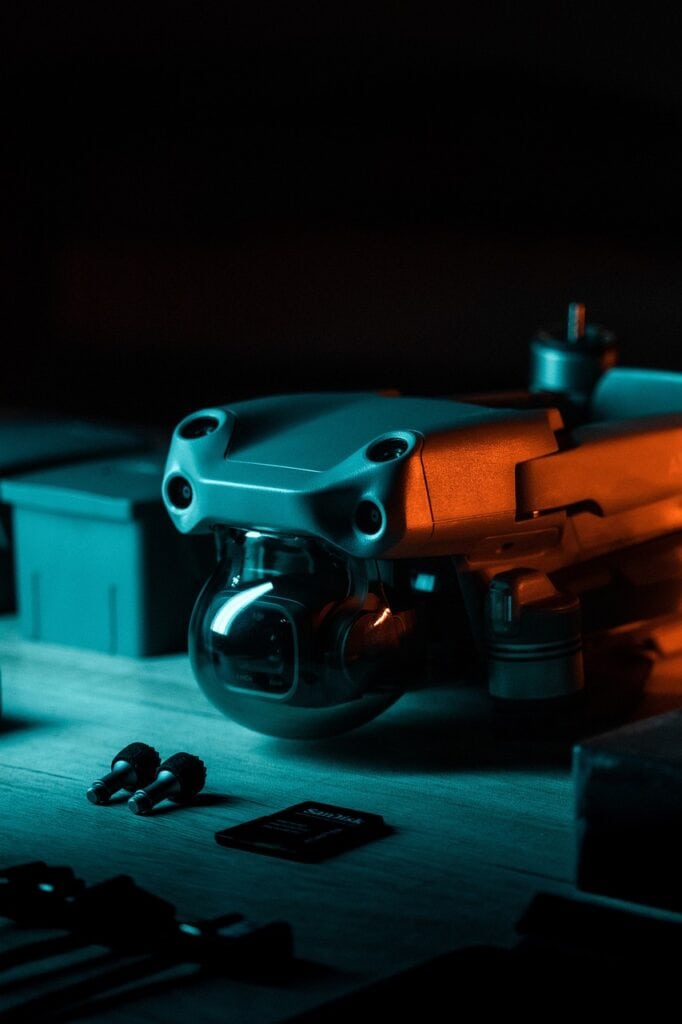Introduction
One industry that has enthusiastically embraced the potential of drone technology is filmmaking. Drones have redefined the art of cinematic storytelling. With their capacity to capture aerial shots and enhance overall cinematography quality, drones have become indispensable to filmmakers across the spectrum, from major Hollywood productions to independent films.
In this article, we embark on a journey into the world of cinematography to explore how drones have altered movie production. First, we will analyze the advantages of employing drones, from capturing aerial shots and elevating the cinematic artist. Furthermore, we will navigate the regulations and safety considerations for drone usage in film production. Finally, we will peer into the future of drone technology in the film industry and envision the continued marks it will leave on different industries.
The Rise of Drone Technology in Film Production
During World War I, the first pilotless vehicles emerged. Initially, these unmanned aerial vehicles (UAVs) served military purposes for reconnaissance, surveillance, and target practice. These aerial vehicles projected themselves as costly, sizable, and hard to operate.UAVs continued to evolve through World War II, and the most notable development was the jet-propelled Ryan Firebee target drone. These UAVs found applications in various military roles, such as combat decoys, missile launch platforms, and propaganda leaflet dissemination.
In the early 2000s, consumer-grade drones began to emerge. Companies like DJI, Parrot, and Yuneec have started producing lightweight and camera-equipped drones. These drones are designed for hobbyists for aerial photography and videography, which shows aerial technology transiting from democratization.
Filmmakers started to recognize how drones can make a difference in film production as drone technology continued to advance and become more accessible. In 2012, the James Bond film “Skyfall” used drones to capture a stunning aerial shot of the Scottish Highlands, making one of the early adoption of drones in major Hollywood productions.
Ever since then, drones have been widely used across the film industry, from experimental filmmakers to blockbuster filmmakers. The drone technology has apparently changed the way of capturing aerial shots and enhancing cinematic storytelling.
Benefits of Drones in Film Production
Apart from capturing awe-inspiring aerial shots, drones confer benefits in film production in many different ways. Drones possess the agility to navigate altitudes and angles, granting filmmakers access to unique perspectives that were previously unattainable. This creative latitude has opened vistas of artistic expression, so directors could manifest in unprecedented ways.
Besides the creative advantages, drones also present a cost-effective solution for aerial cinematography. Previously, helicopters or cranes were required to capture aerial footage which could be both time-consuming and expensive. Drones, however, as an affordable alternative, even filmmakers with limited budgets can have access to aerial shots.
Capturing Aerial Shots with Drones
Drones can sweep landscapes effortlessly, providing viewers with a bird’s-eye perspective of the scene. They excel at tracking moving objects, with high-quality digital cameras or GoPros, drones offer filmmakers real-time control over camera angles and settings during flight.Furthermore, advanced GPS and avoidance systems empower drones to navigate through tight spaces and obstacles like trees and buildings. The feature is particularly advantageous for capturing aerial shots in urban settings.
Enhancing Cinematography with Drones
As drone technology continues its advancement, its integration into film production becomes even more ubiquitous. In the foreseeable future, drones may evolve to become increasingly autonomous, capable of executing pre-programmed flight paths and capturing shots without a pilot. This evolution promises to unlock new vistas of creativity for filmmakers, enabling them to capture shots and perspectives that were once inconceivable.However, as drone technology surges forward, filmmakers must remain vigilant in prioritizing safety and adhering to regulatory guidelines. With appropriate training, adherence to safety protocols, and responsible usage, drones can continue to redefine the art of filmmaking.
Conclusion
Drones have left an indelible mark on filmmaking, reshaping the cinematic landscape and enhancing the storytelling process. Their ability to capture breathtaking aerial shots and improve overall cinematography quality has ushered in a new era of creative possibilities for filmmakers.
While the regulatory and safety considerations are significant, the benefits of using drones in film production are undeniable. With continued advancements in drone technology, their role in filmmaking is poised to expand further, enabling filmmakers to innovate and captivate audiences in unprecedented ways. The cinematic future, it seems, is set to soar to new heights with the assistance of these remarkable aerial companions.
AUAV, a leader in drone technology, specializing in drone manufacturing, services, and training, AUAV empowers industries with cutting-edge solutions.

